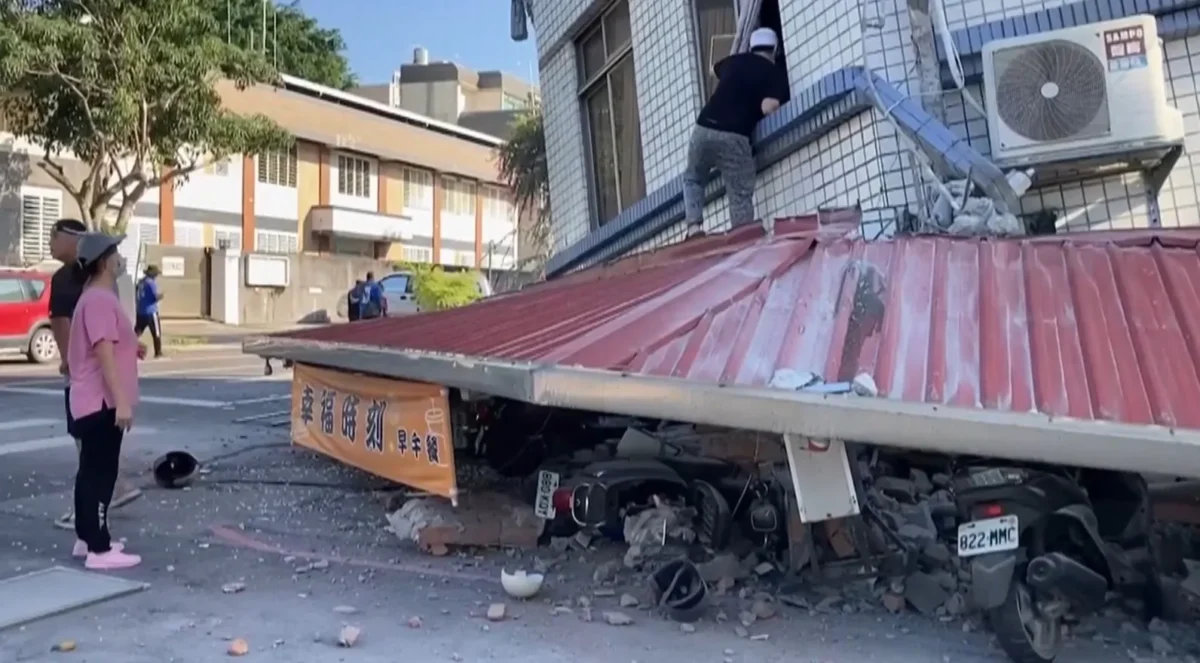Taiwan was shaken by its strongest earthquake in 25 years on April 3, causing buildings to collapse and landslides to crush highways and tunnels and resulting in at least nine deaths and triggering tsunami warnings across the region. More than 1,000 were injured.
The 7.4 magnitude quake struck at 7:58 a.m. local time, about 11 miles southwest of the east coast city of Hualien, at a depth of about 21 miles, according to the U.S. Geological Survey (USGS). It was followed by a 6.5 magnitude aftershock just 13 minutes later.
The National Fire Agency reported that all of the deaths and most of the severe damage to buildings occurred in Hualien County, near the epicenter on the island’s less populated east coast.
The number of injuries reported has grown, with at least one of the casualties being identified as a hiker.
About 130 people were trapped in buildings in Hualien when several buildings sustained heavy damage. Rescue attempts were underway throughout the day on April 3.
One five-story building collapsed on its first floor, and the rest of the structure was leaning at a 45-degree angle.
Evacuations from three of the four partially collapsed buildings were successful. Emergency crews have rescued 22 people from the nine-story Uranus Building, which is leaning to the right after its ground level collapsed, according to local officials. One more person was thought to remain in the building at press time.
Landslides have also damaged the Suhua Highway, a major road along Taiwan’s east coast, at multiple points. Video footage shown on local media shows large boulders falling and severely damaging the highway and tunnels, including one that was split in half. At least 12 cars were damaged and about nine people have been injured, according to local media.
In the capital city of Taipei, roughly 170 miles away, tiles fell from older buildings, and some newer office complexes experienced structural damage.
Train services were suspended across the island, which is home to 23 million people, as were subway services in Taipei. However, life in the capital quickly returned to normal, with children attending school and the morning commute proceeding without major disruptions.
Flights were suspended but later resumed.
Tsunami Warnings Canceled
Tsunami warnings were issued by Taiwan, Japan, and the Philippines after the earthquake hit the region. However, these warnings were later canceled.
Taiwan experienced a relatively small tsunami of about 1.5 feet in Chenggong, which is located 62 miles south of the earthquake’s epicenter.
The Japan Meteorological Agency reported a tsunami wave of one foot hitting the coast of Yonaguni Island about 15 minutes after the quake. A one-foot wave was also observed at Okinawa Island, but no significant damage occurred.

The Philippine Institute of Volcanology and Seismology warned those in coastal areas to evacuate to higher ground following the earthquake but ultimately reported that “no significant sea level disturbances” were recorded, and the warning was later lifted.
Soon after the quake struck, the Japan Self-Defense Forces dispatched aircraft to assess the tsunami’s impact around the Okinawa region and prepare shelters for potential evacuees.
Despite the seismic activity, the Pacific Tsunami Warning Center stated that there was no tsunami threat to Hawaii or the U.S. Pacific territory of Guam. It later stated that any threat to the United States has “largely passed.”
Taiwan’s Central Emergency Operation Center reported that more than 91,000 households were still without power after the tsunami warnings.
Taiwan is prone to earthquakes because of its location on the Pacific Ring of Fire, which is home to the world’s most active volcanoes and the site of most earthquakes. The tremors are caused by tectonic plates pushing against each other, resulting in sudden releases of energy.
The April 3 earthquake occurred as a result of reverse faulting near the boundary between the Eurasia and Philippine Sea plates, the USGS reported.
The earthquake is believed to be the most significant to hit Taiwan since a temblor in 1999 that caused extensive damage. Taiwan sits along the Pacific “Ring of Fire,” a zone of seismic faults encircling the Pacific Ocean where the majority of the world’s earthquakes occur.

The Associated Press contributed to this report.
From The Epoch Times

